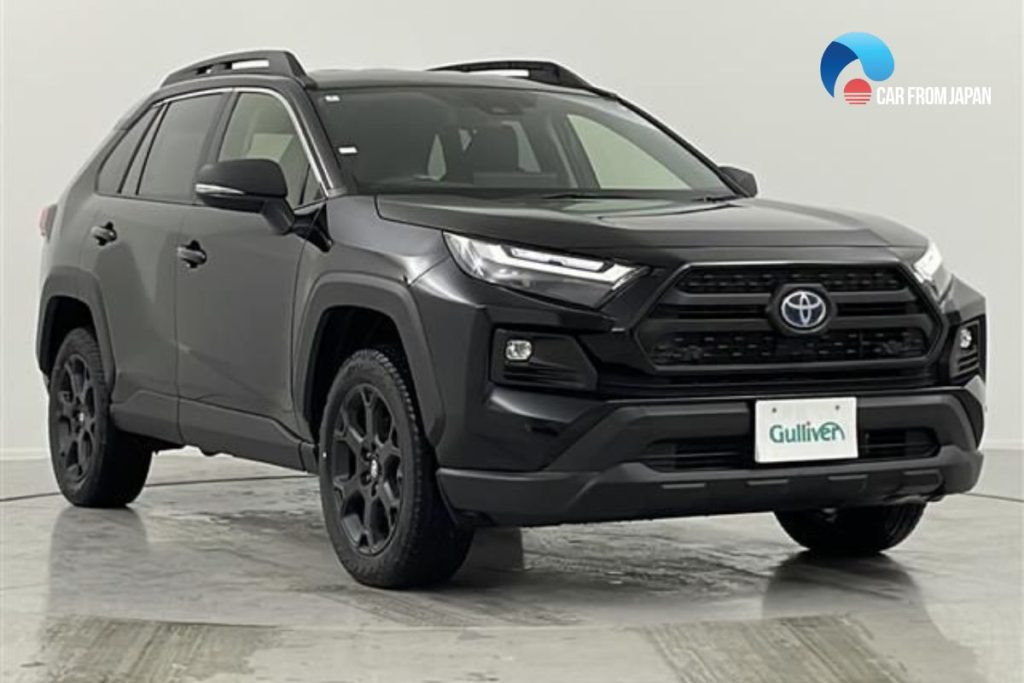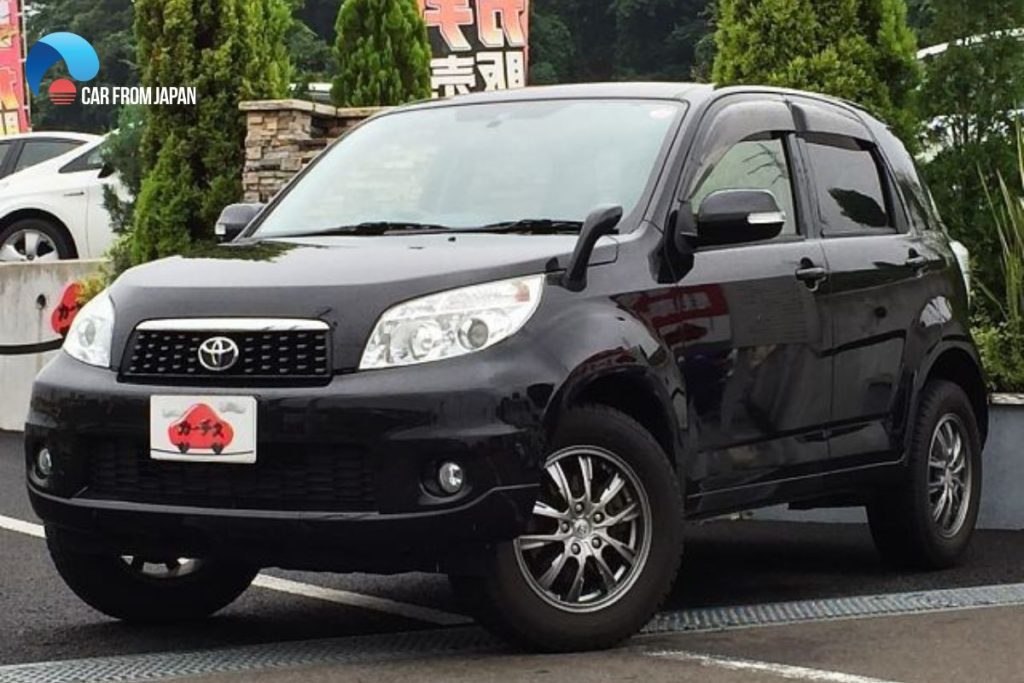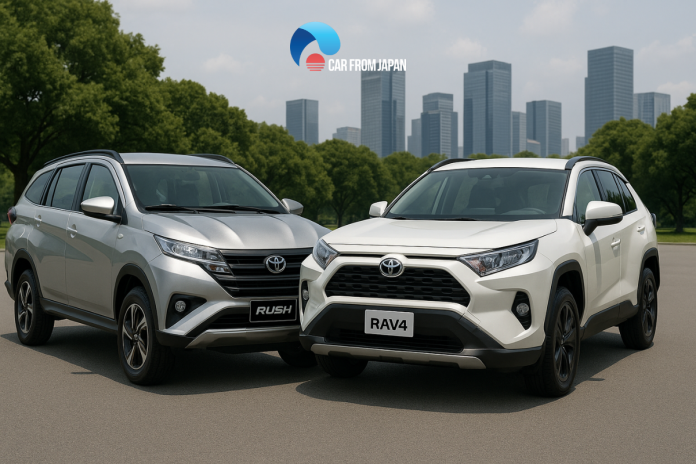At a glance, the Toyota Rush vs Toyota RAV4 look like they’re from the same family. They’re both SUVs with that tough Toyota look. But when you look at the price tag, you see a huge difference. That’s because, underneath the metal, these are two completely different types of vehicles. Let’s break down what you’re really getting with each one.
Contents
- Overview: Toyota RAV4 And Toyota Rush
- FAQs on Toyota RAV4 and Toyota Rush
- What are the main differences between the Toyota RAV4 and Toyota Rush?
- Which one is larger in terms of size and seating capacity?
- How do the engine options compare between the RAV4 and Rush?
- Are both vehicles suitable for off-road driving?
- Which model offers better fuel efficiency?
- Which model is more suitable for families?
- Final Words
Overview: Toyota RAV4 And Toyota Rush
Both SUVs are similar in one aspect—they are your average day-to-day vehicles that are good for city driving if you need extra storage and interior space, and for off-road trips.
These models are not boring, but nothing exciting about them either. Rush looks good, has a spacious interior, and is equipped with all standard facilities, everything that you want for daily driving. The features of the basic 7-seater SUV are similar for both the 2018 and 2019 models.
Toyota Rush looks attractive with its rugged, sporty exterior. It borrows styling cues from other Toyota models, especially from the Fortuner, which is evident from the tapered LED headlights and wide front grilles.
Despite being a crossover, the RAV4 mimics SUV-like proportions by featuring a lower platform with an extended wheelbase. It is another good-looking vehicle with modern LED taillights, a two-tone roof, LED projector-beam headlights, and front grilles.
1. Interiors
The Toyota Rush has a spacious cabin with plenty of headroom for everyone, even for the third-row passengers. There is not much legroom, though.
The seats are comfy, and the touch-screen infotainment system has a Bluetooth option. There are several cup holders in the place of the center console and door pockets.
Toyota RAV4 also has a roomy interior with an abundance of leg- and headroom. People with a 6-foot height won’t feel uncomfortable on a long journey.

However, unless you upgrade to the SE trim, there is no lumbar adjustment except for the driver’s seat. There is a center console, an infotainment system, dual-zone climate control, and heated front seats.
However, the RAV4 will come behind the Rush because it looks and feels cheap. You won’t be impressed with the SofTex vinyl covers and plenty of plastic features.
2. Performance
The power comparison of the Toyota RAV4 and Toyota Rush will keep the former ahead. A Rush 1.5 E MT has a 4-cylinder in-line gasoline engine that produces 102 horsepower.
On the other hand, a RAV4 2.5 LE is equipped with a 2.5L 4-cylinder gasoline engine that yields 203 horsepower. The Rush comes with either a 4-speed automatic or a 5-speed manual, while the RAV4 offers an 8-speed automatic.
The 134 Nm torque of the Rush is enough for city driving. The acceleration could be better, but you don’t need more for cruising through city traffic.
The RAV4 is punchy around town and stable around turns. Its off-road performance is better than most of its competitors.
3. Cargo capacity
The RAV4 offers more room for storing your stuff with 38.4 cubic feet of cargo space. It increases to 73.4 cubic feet when the rear seats are folded. T
That is some huge storage space for a compact SUV. The Rush provides a generous cargo area, too, with 21.5 cubic feet of space. You can free up some more space by folding the rear seats forward.
4. Safety features

Both the Toyota RAV4 and Toyota Rush are equipped with standard and some advanced safety features. The Rush has Anti-lock Braking System (ABS), Vehicle Stability Control (VSC), and Hill Assist Control (HAC).
There are six airbags to provide full protection to the driver and passenger in the event of a collision. The smart entry system, coupled with an immobilizer and an alarm, minimizes the risk of being stolen. You can also control access to the car with the door lock feature.
On the other hand, the RAV4 is also quite safe as it receives a high rating from the National Highway Traffic Safety Administration for frontal crashes, side crashes, and rollover tests.
Some basic safety features the car has are adaptive cruise control, lane keep assist, forward collision warning, and a rearview camera.
It also has some impressive advanced functions, including blind spot monitoring, parking sensors, and a 360-degree parking camera system.
5. Fuel consumption
RAV4 offers good fuel economy. Its city mileage is around 22 or 23 mpg, while the highway mileage ranges between 28 and 30 mpg. Rush’s mileage is around 35.6 mpg for the manual version and 35 mpg for the automatic version.
FAQs on Toyota RAV4 and Toyota Rush
What are the main differences between the Toyota RAV4 and Toyota Rush?
The Toyota RAV4 is a compact SUV known for its spaciousness and versatility, while the Toyota Rush is a smaller SUV designed for urban commuting. The RAV4 offers more space, features, and engine power compared to the Rush.
Which one is larger in terms of size and seating capacity?
The Toyota RAV4 is larger in terms of overall dimensions and offers seating for up to five passengers. The Toyota Rush is smaller and typically offers seating for up to seven passengers in its three-row configuration.
How do the engine options compare between the RAV4 and Rush?
The Toyota RAV4 often comes with more powerful engine options, including larger-displacement engines for enhanced performance. The Toyota Rush usually features smaller engines more suited for urban driving.
Are both vehicles suitable for off-road driving?
The Toyota RAV4 is more equipped for light off-road driving due to its larger size and often available all-wheel-drive (AWD) system. The Toyota Rush is designed more for urban use and may have limited off-road capabilities.
Which model offers better fuel efficiency?
The Toyota Rush generally offers better fuel efficiency due to its smaller size and lighter weight. It’s designed for urban driving and typically has more economical engine options.
Which model is more suitable for families?
The Toyota RAV4 is often a better choice for families due to its larger size, more spacious interior, and available seating for five. The Rush, with its smaller size and available third-row seats, can accommodate smaller families or individuals.
Check out this video from Doug DeMuro to learn more about the 2019 Toyota RAV4!
Final Words
So, which one is the better SUV? It all comes down to what you truly need.
If you have the budget and want real SUV performance, comfort, and the safety of all-wheel drive, the RAV4 is the clear winner. It’s a higher-quality vehicle in every way.
But, if your main goal is to carry as many people as possible for the lowest price, and you’re okay with a more basic ride, the Rush does that one job very well. The Rush appears to be a better choice for city driving.



